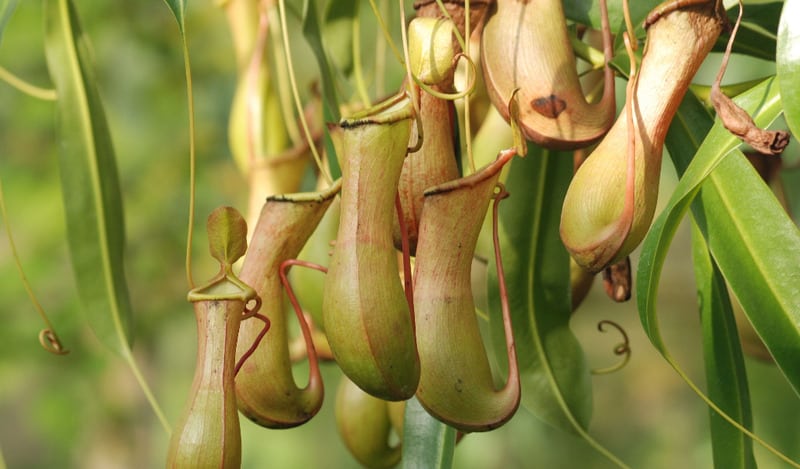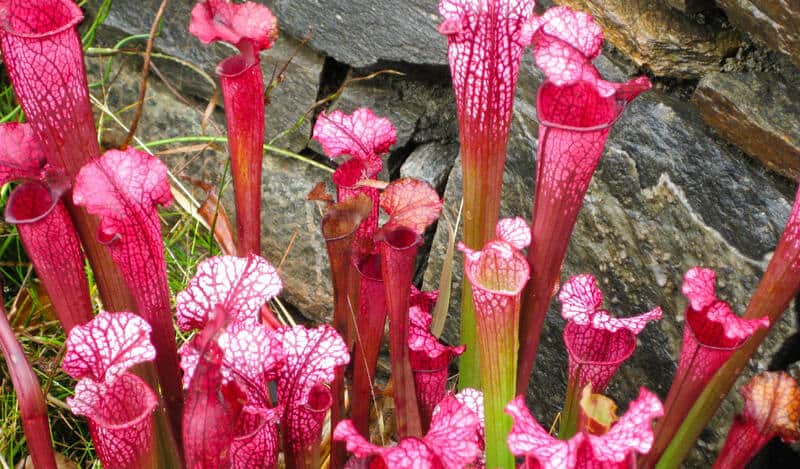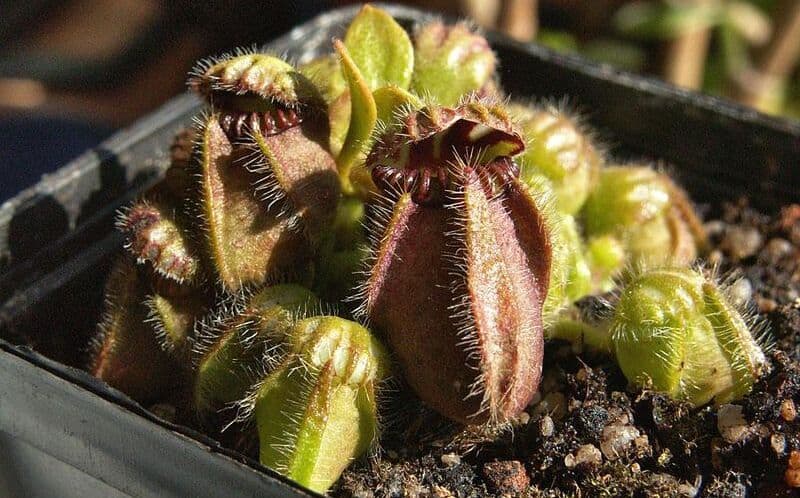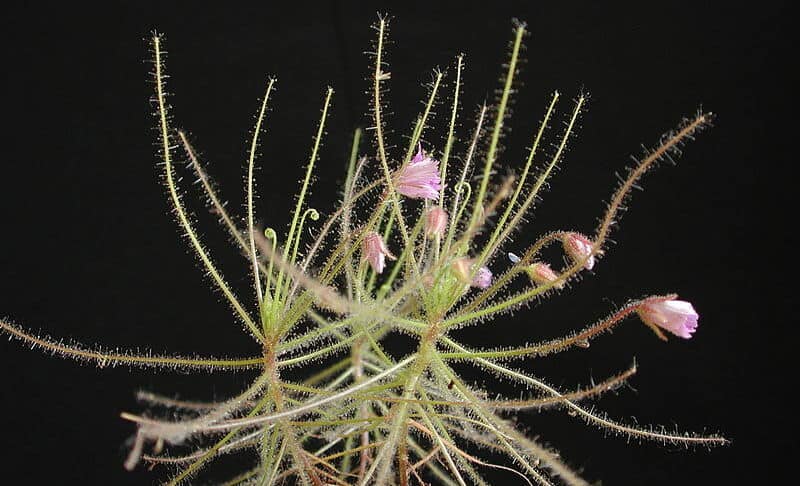We all love adding a touch of personality to our gardens. Sometimes it’s by growing flowers in our favourite colours; other times, we sow fruit trees for fresh produce.
But if you really want to make a statement — and give yourself an intriguing conversation topic — try cultivating carnivorous plants.
A carnivorous plant is one that thrives by trapping and consuming insects and other arthropods. It has evolved and adapted to find nutrition from alternative sources due to low soil nutrients.
It also generates its own energy through photosynthesis. (Isn’t nature amazing?)
Australia, in particular, has some of the richest carnivorous plant diversities, with at least 187 recognised species.
Some of the carnivorous plants you can grow in your own garden or home include:
- Venus flytrap
- Monkey cups
- Pitcher plants
- Sundew
- Bladderwort
- Butterworts
- Moccasin plant
- Rainbow plants
If you want to try your hand at growing a carnivorous plant at home, here are some species to check out — and some care tips to keep in mind!
Growing Carnivorous Plants Outdoors
Most carnivorous plants cultivate better from seedlings, so contact your local nursery to see how to obtain them.
To grow, soil type is very important to cultivating carnivorous plants. They need acidic ground (or any other growing medium), with a pH lower than 5. This means no commercial soil mix, potting mix, or fertiliser.
Since most carnivorous plants are bog plants, they thrive in a similar environment. The best medium is sphagnum moss, but unenriched peat moss is a good substitute.
Mix it with rocky or grainy additives like pearlite or sand. You can consult a professional gardener for preparing your yard beforehand, or helping clean and arrange your garden to allow space for your new plants.
For carnivorous plants grown outdoors, it’s important that your climate doesn’t have a harsh cold season — they won’t tolerate frost.
To cultivate, dig a hole in the ground somewhere sunny and layer it with peat moss.
Create a bowl shape (mounded at the edges and dipping in the middle), then fill with water to create an artificial ‘bog’ for your carnivorous plant to enjoy.
Growing Carnivorous Plants Indoors In Terrariums
It’s definitely possible to cultivate carnivorous plants indoors — just grow them in a terrarium! This way, the plants can make their own microclimate inside a container with regulated humidity.
But keep them somewhere with plenty of sunlight — your carnivorous plant won’t be happy without it.
A fish tank will work well, with slats at the bottom so the roots don’t sit directly in stagnant water.
Mulch them with sphagnum moss or peat moss, which can also help indicate moisture levels — if the moss is brown and dry, your plants need water!
You can also leave the plant in its pot, then place that in the terrarium in a layer of water. Fill with more sphagnum moss or peat moss in between the pots to cover them up.
Just make sure not to over-pot your plant — and don’t let their traps touch the ground.
The Best Carnivorous Plants To Grow In Australia
If you’re ready to get some bug eating plants, here’s a rundown of some of the coolest carnivorous plants.
1. Venus flytrap

Easily the most popular of carnivorous plants, the venus flytrap (dionaea muscipula) is a small plant with hinged leaves that look like little mouths.
These have stiff spines, with glands that secrete nectar to attract prey. The little ‘hairs’ along the leaf edges trigger when touched, causing the leaf to shut and trap its prey.
They like temperate to tropical climates, and plenty of sun. Plants in pots should sit in a tray of distilled water at least 2cm high.
2. Monkey cups

Nepenthes is a tropical plant with many varieties, with a pitcher-shaped leaf that contains water. It’s called a monkey cup because rainforest monkeys have been seen drinking water from the leaves.
The rim of the ‘cup’ is slippery, causing any insect to slip and fall into the water at the bottom. The prey drowns and is eventually digested.
Monkey cups need warmth and humidity, so they’ll thrive outdoors in a tropical region, but need a terrarium in temperate areas.
They also need a half-strength fertiliser high in nitrogen if grown indoors.
3. Pitcher plant

There are eight species in the Sarracenia genus, all producing stunning leaf formations that form a funnel or ‘pitcher’.
Once an insect crawls into the leaf pitcher, the slippery wax coating and hairs trap it to its doom.
Grow pitcher plants in temperate and sunny climates. You can even plant them by a pond as long as the rim is above water!
They thrive in summer but go dormant in winter, so wet them less in cooler months.
4. Sundew

The sundew plant (drosera) takes its name from the sticky nectar that sits on its tentacles and shines in the sun.
The substance attracts insects, which are quickly caught by the ‘glue’ with no escape.
They’ll thrive well in a pot, so long as there’s plenty of sunlight. Place in a tray of water, but remove in winter and sprinkle once a week.
5. Bladderwort

It’s a little amusing, but bladderwort (utricularia) derives its name from its little bladder-like traps. Tiny hairs on the bladder openings detect when an insect lands on the rim.
This causes the bladder to inflate, sucking the prey in and trapping it inside.
Bladderwort plants reseed easily, so if you’re growing them outdoors, be mindful of their invasive potential.
If you’d rather keep them indoors, make sure they get at least four hours of sunlight, in equal parts perlite and peat.
6. Butterworts

Also called flypaper traps, butterworts (pinguicula) trap insects with the sticky mucilage that coats their leaves.
They also produce small, pretty flowers in shades of yellow, pink, purple, or white.
Butterwort plants grow in temperate to warm zones, and if outdoors, they’ll do well in moist soil — even near ponds!
They’ll go dormant in winter to recover, so you can prune them close to spring to encourage new growth.
7. Moccasin plant

The cephalotus only naturally grows in extreme southwestern Australia, and is called a Moccasin Plant or Australian Pitcher Plant.
The green and red pitcher traps resemble small, soft moccasins.
Despite being native to Australia, they’re difficult to cultivate since they dislike prolonged heat or wetness — which, in Australia, well. That poses a bit of a challenge.
Pot these in a free-draining mix of peat and perlite. If you keep them on a tray, let them dry out between watering.
8. Rainbow plant

Byblis are known as Rainbow Plants because of their prismatic sheen under sunlight, and seven documented flower colours.
They’re native to Australia, resembling the drosera trees. Byblis are covered in a shiny, sticky ‘glue’ that attracts insects, then trap prey in their clutches.
Rainbow plants are delicate, needing smoke exposure to germinate — place seeds in moist soil, then place a burning stick or grass nearby to smoke it.
After that, give it long periods of warmth and sunlight.


